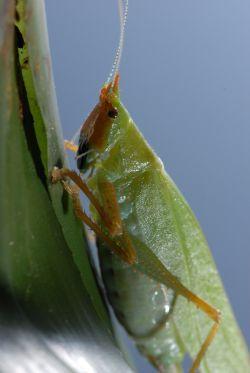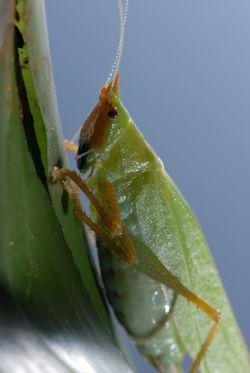A newly identified hearing organ in the South American bushcricket, Copiphora gorgonensis, could lead to the creation of microscopic acoustic sensors.
Katydids or bush crickets have four ear drums, two on each foreleg, but it was unknown how these membranes connect with the insects’ sensory receptors.
Researchers in England have discovered a fluid-filled structure called the Auditory Vesicle that transforms sound waves into other forms of energy for detection by the katydid’s mechano-sensory cells, rather like a miniature version of the middle ear bones in mammals, via a process called impedance conversion.
The katydid mechanism is simpler than the mammalian one, making it more robust, and a good model for extremely tiny ultrasonic microphones. For example, some species are so sensitive they can detect long-range ultrasonic signals (>130 kHz).
“These results were obtained on a single species, C. gorgonensis, which uses moderate ultrasonic frequencies of 23kHz,“ said study co-author Fernando Montealegre-Z at the University of Lincoln in a press release. ”However, we have measured other species and have discovered a bush cricket species in the rainforests of South America, which emits sounds at 150kHz.”
“Sounds at these frequencies suffer excess attenuation and would not transmit far in a rainforest environment, therefore limiting long-range communication. Yet they manage to listen to one another from far greater distances.”
The team is planning further research to study the insects in their natural environment with a system of special electrodes that will allow humans to hear the same sounds as the crickets.
A better understanding of insect hearing and sensory systems could have a range of applications, such as hearing aids, biomedical imaging, and ultrasonic assessment of man-made structures’ integrity.
The research was published in Science on Nov. 16.
The Epoch Times publishes in 35 countries and in 19 languages. Subscribe to our e-newsletter.






